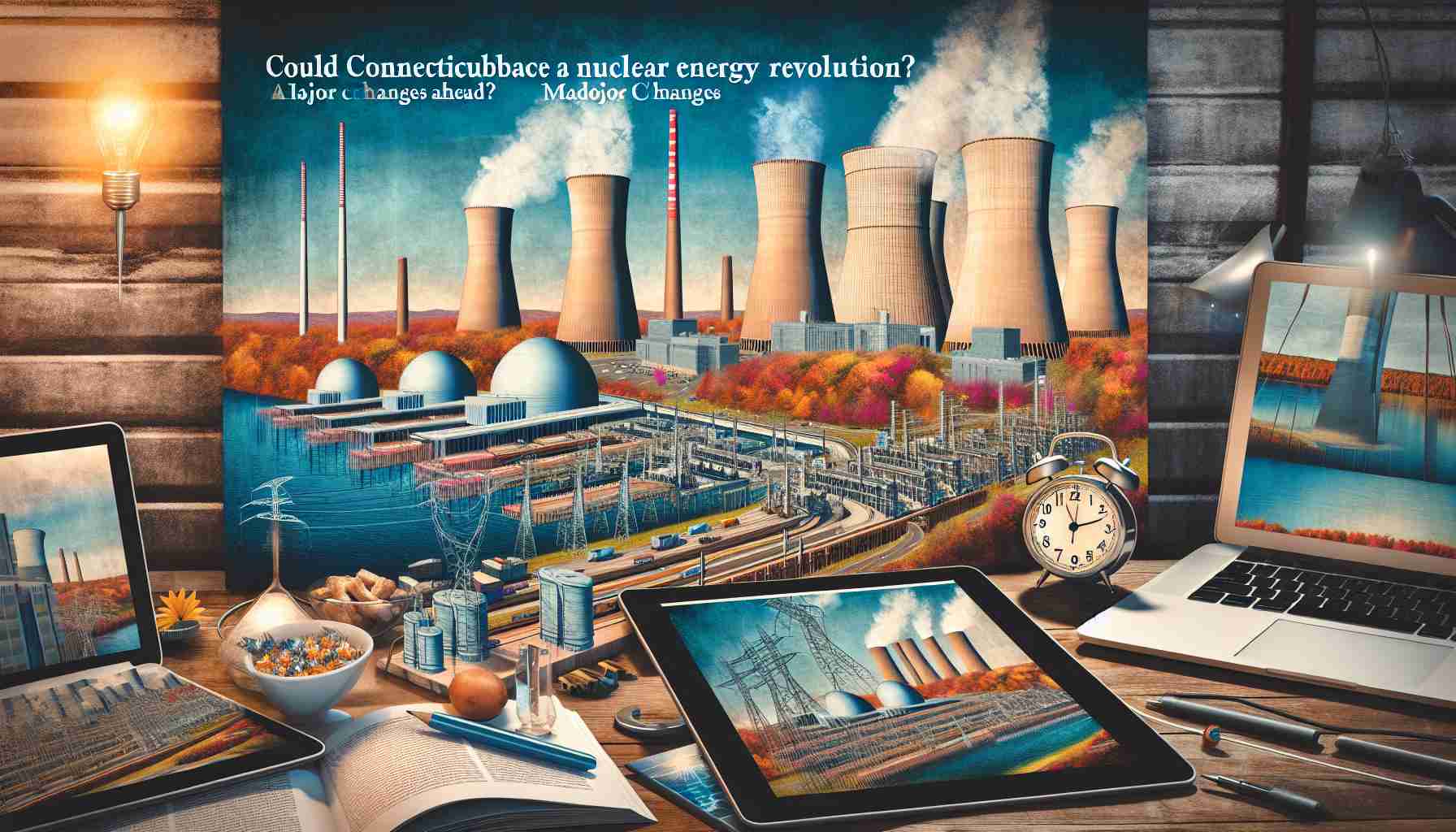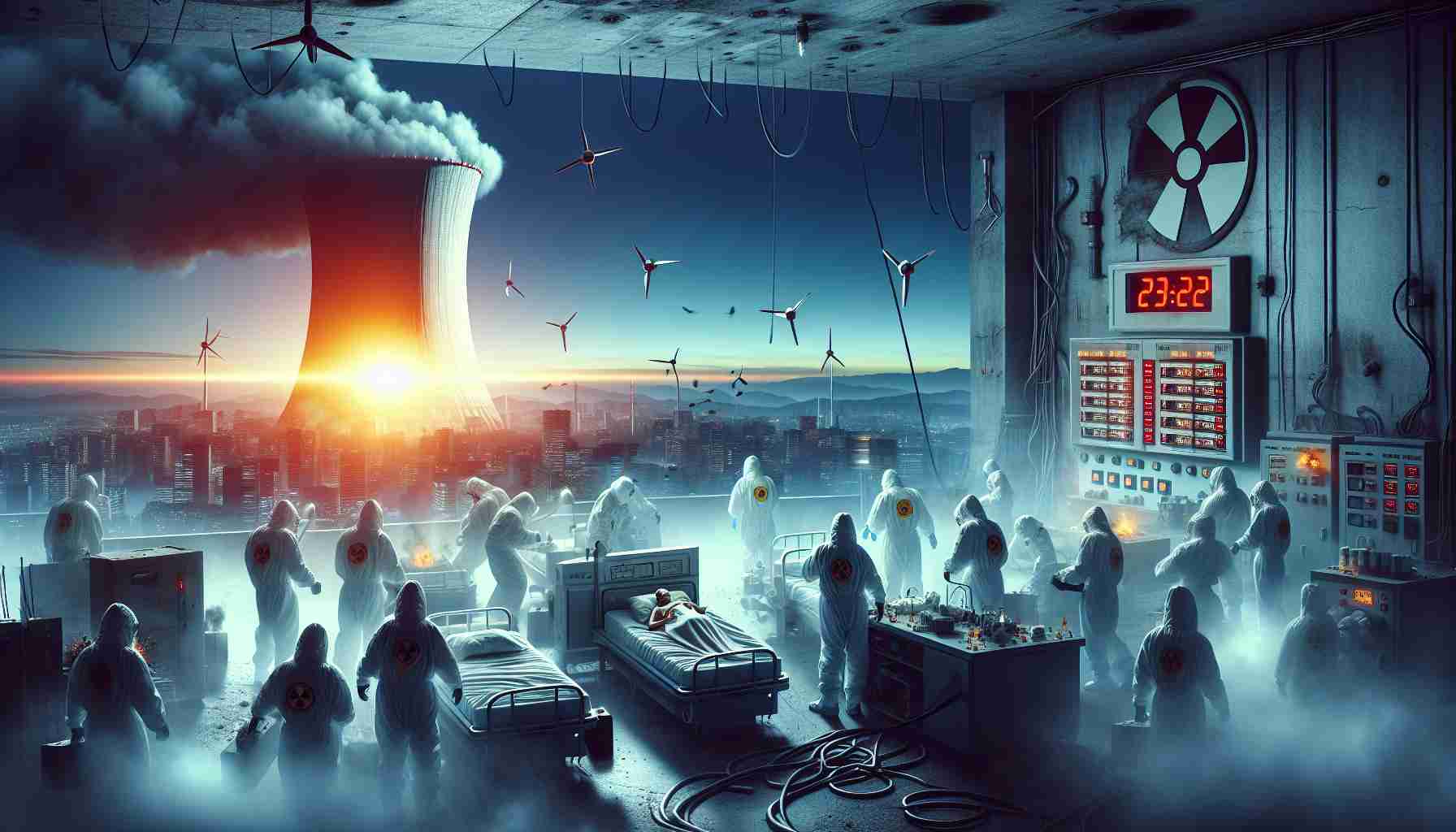Connecticut’s Energy Future at a Crossroads
Connecticut is set to make significant strides in its energy policies, as state Democrats aim to lift the long-standing ban on nuclear power plants. Their latest initiative, dubbed the “Ratepayers First Act,” was unveiled during a press event at the Legislative Office Building in Hartford. This legislation focuses on facilitating the construction of small modular reactors across the state.
Senator Norm Needleman, who co-chairs the Energy and Technology Committee, emphasized the growing bipartisan backing for this approach, viewing small modular reactors as a solution to the increasing energy costs and heightened demand. He noted that while these reactors are not an instantaneous solution to the energy crisis, they present a carbon-free alternative, provided safety standards are met.
Currently, the Millstone Nuclear Power Station situated in Waterford is a critical asset for Connecticut, generating 40% of the state’s electricity and nearly all its clean energy supply. With global advancements in small modular reactor technology, Needleman forecasts that these innovations will start making a significant impact in the 2030s.
In 2022, Connecticut revised its nuclear moratorium to permit these smaller reactors at the Millstone site. The fresh legislative proposal aims to extend this opportunity to other areas statewide, a move that has garnered support from Governor Ned Lamont as well. Such changes could herald a new chapter for energy production in Connecticut.
Shaping the Future: The Broader Impact of Connecticut’s Energy Policy Shift
Connecticut’s potential pivot towards nuclear energy, particularly through the adoption of small modular reactors (SMRs), could resonate well beyond state lines, reflecting a growing trend in energy policy across the United States and possibly influencing global energy paradigms. As states grapple with the dual challenges of rising energy costs and climate change, Connecticut’s shift represents a bold step that may serve as a catalyst for broader adoption of cleaner energy technologies nationwide.
Small modular reactors, often heralded for their safety features and reduced footprint, present a compelling solution to the urgent need for carbon-free energy sources. Their implementation could pave the way for significant reductions in greenhouse gas emissions, crucial for meeting both national and international climate goals. Moreover, the anticipated economic benefits, such as job creation in construction and maintenance of these facilities, may stimulate local economies and provide a counterbalance to rising energy prices.
From an environmental perspective, the integration of SMRs could alleviate pressure on natural resources by decreasing reliance on fossil fuels. As the world moves towards more comprehensive carbon pricing frameworks, a robust nuclear infrastructure may prove vital in transitioning economies towards sustainability, enabling them to meet both energy demands and climate commitments effectively.
Looking ahead, this legislative shift not only underscores the urgency for energy innovation but may also signal a larger societal acceptance of nuclear energy as a reliable resource. As Connecticut navigates this pivotal moment, it could influence public opinion and policy on energy production—a dynamic that could reshape the cultural and economic landscapes in various regions facing similar energy dilemmas.
Connecticut: Pioneering a Sustainable Energy Future with Small Modular Reactors
Connecticut’s Energy Landscape
Connecticut stands at a pivotal moment in its energy policy as it explores innovative avenues to tackle rising energy costs and demand. The state’s recent legislative efforts, particularly the “Ratepayers First Act,” reveal a commitment to not only diversify energy sources but also to embrace cutting-edge technologies for sustainable energy production.
Features of the Ratepayers First Act
The “Ratepayers First Act” aims to remove barriers to the construction of small modular reactors (SMRs), which are compact nuclear reactors designed with safety and efficiency in mind. Key features of this legislation include:
– Bipartisan Support: The initiative has garnered significant bipartisan backing, illustrating a collective embrace of nuclear technology as a viable energy source.
– Focus on Small Modular Reactors: SMRs are viewed as a long-term strategy to enhance energy independence while maintaining a low carbon footprint. These reactors can be deployed in various locations, providing flexibility in energy generation.
Pros and Cons of Small Modular Reactors
# Pros:
– Carbon-free Energy: SMRs offer a clean alternative to fossil fuels, significantly reducing greenhouse gas emissions.
– Increased Energy Security: By diversifying energy sources, Connecticut can enhance its energy security and reduce reliance on external energy supplies.
– Economic Benefits: The construction of SMRs could create jobs and stimulate local economies.
# Cons:
– High Initial Costs: The upfront investment for building SMRs can be substantial, although this might be balanced by lower operational costs.
– Public Perception and Safety Concerns: Despite advancements in technology, concerns about nuclear safety and waste management persist among the public.
– Regulatory Hurdles: The development and deployment of nuclear technology are heavily regulated, which can extend timelines and increase costs.
Insights on Environmental Sustainability
As part of its commitments to sustainability, Connecticut is turning to nuclear energy not only for its economic potential but also for its ability to contribute to environmental goals. The role of nuclear power in achieving net-zero carbon emissions by 2050 is increasingly recognized as vital in climate discussions.
Technological Innovations and Future Outlook
The next decade is expected to be transformative for the nuclear sector, with technological innovations in SMR design and safety improvements. The advancements in this field highlight a trend towards more resilient and adaptable energy systems that could reshape the energy landscape.
Conclusion: The Path Ahead
With the backing of key state officials and communities, Connecticut is poised to lead the charge toward a new era of energy production, leveraging the capabilities of small modular reactors. As the state navigates this transition, the expectations are high for these developments to yield a cleaner, safer, and more sustainable energy future.
For more information on Connecticut’s energy initiatives and legislative updates, visit Connecticut State Government.
The source of the article is from the blog trebujena.net



